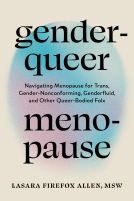
Rediscovering Black Portraiture
by Peter Brathwaite
This title was previously available on NetGalley and is now archived.
Send NetGalley books directly to your Kindle or Kindle app
1
To read on a Kindle or Kindle app, please add kindle@netgalley.com as an approved email address to receive files in your Amazon account. Click here for step-by-step instructions.
2
Also find your Kindle email address within your Amazon account, and enter it here.
Pub Date May 30 2023 | Archive Date Jun 21 2023
Talking about this book? Use #RediscoveringBlackPortraiture #NetGalley. More hashtag tips!
Description
Join Peter Brathwaite on an extraordinary journey through representations of Black subjects in Western art, from medieval Europe through the present day.
“These mirror images with their uncanny resemblances traverse space and time, spotlighting the black lives that have been silenced by the canon of western art, while also inviting us to interrogate the present.” —Times (UK)
Since the beginning of the COVID-19 pandemic, Peter Brathwaite has thoughtfully researched and reimagined more than one hundred artworks featuring portraits of Black sitters—all posted to social media with the caption “Rediscovering #blackportraiture through #gettymuseumchallenge.”
Rediscovering Black Portraiture collects more than fifty of Brathwaite’s most intriguing re-creations. Introduced by the author and framed by contributions from experts in art history and visual culture, this fascinating book offers a nuanced look at the complexities and challenges of building identity within the African diaspora and how such forces have informed Black portraits over time. Artworks featured include The Adoration of the Magi by Georges Trubert, Portrait of an Unknown Man by Jan Mostaert, Rice n Peas by Sonia Boyce, Barack Obama by Kehinde Wiley, and many more. This volume also invites readers behind the scenes, offering a glimpse of the elegant artifice of Brathwaite’s props, setup, and process.
An urgent and compelling exploration of embodiment, representation, and agency, Rediscovering Black Portraiture serves to remind us that Black subjects have been portrayed in art for nearly a millennium and that their stories demand to be told.
An exhibition of Brathwaite’s re-creations is on view at the Bristol Museum & Art Gallery in Bristol, UK from April 14 to September 3, 2023.
Advance Praise
“Ever since I first stumbled across Peter’s portraits on Twitter, I’ve been captivated by his sharp wit, innovative costuming, rich range of visual reference, and the sheer joy of each image. This is a book that will enchant and intrigue and educate. I’m thrilled by the beauty and fun and history on every page.”
—Samira Ahmed, BBC broadcaster
“This highly entertaining book is a breathtaking visual explosion in which Brathwaite reimagines a wide variety of portraits of Black people in a stunningly creative way. This brilliant concept is not only an original visual treat but also an important historical work that focuses on Black portraiture across the centuries.”
—Baroness Floella Benjamin DBE, actress, presenter, broadcaster, and parliamentarian
“Brathwaite brings a novel innovative way into considering the Black presence in art, creating another dimension to consider and reflect on the original work, helping us not just to engage more deeply with the composition and its subject but bringing the Black presence to life, re-creating it for us today in a thoroughly modern and highly relevant manner—an exciting Black visual tour de force!”
—Michael I. Ohajuru FRSA
“A truly compelling visual feast that reanimates the archives of Black portraiture in the present. Braithwaite brings lost souls back into view in a meditation on Black presence within art's histories. Accompanied by a moving commentary on his own experiences as what he terms 'a rare breed' of Black British opera singer encountering career-long racism, Braithwaite retells narratives of Black historical subjects in order to return dignity and agency to their otherwise so-often 'submerged lives'. Essays from renowned scholars Cheryl Finley, Temi Odumosu and Mark Sealy amplify Braithwaite's sensitive and poetic narrative account, as well as the extraordinarily vibrant and ambitious photographic reconstructions of historic artworks reproduced here in glorious colour. This is one of the most moving and joyous aesthetic legacies of Covid times and a triumph of creative endeavour.”
—Professor Dorothy Price FBA, Professor of Modern and Contemporary Art and Critical Race Art History, Courtauld Institute of Art
Available Editions
| EDITION | Other Format |
| ISBN | 9781606068168 |
| PRICE | $40.00 (USD) |
| PAGES | 168 |
Links
Available on NetGalley
Average rating from 12 members
Readers who liked this book also liked:
L.M Montgomery
Children's Fiction, Comics, Graphic Novels, Manga, Teens & YA
James McBride
General Fiction (Adult), Historical Fiction, Literary Fiction
Sam Prentice-Jones
Comics, Graphic Novels, Manga, Sci Fi & Fantasy, Teens & YA


















